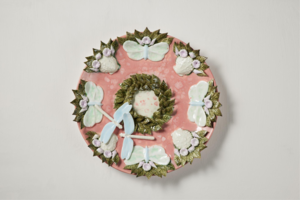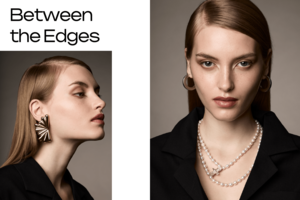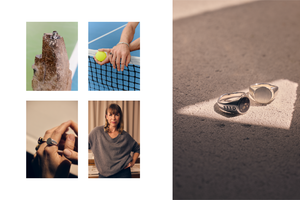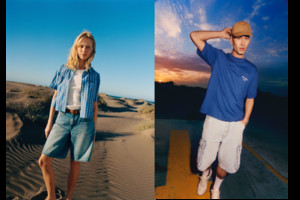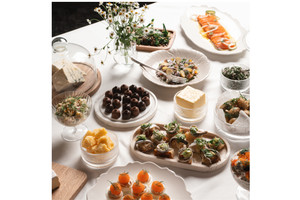Stockholm Art Week: An Interview With Amy Simon
Written by Natalia Muntean by Zohra VanlerbergheAmy Simon’s work is a profound meditation on identity, memory, and the fluid boundaries between self and other. In her latest series, Io (Italian for “I”), she redefines portraiture through reverse selfrepresentation, stripping away preconceptions of age and gender while drawing on the symbolism of hair, evoking mythic figures like Medusa and Rapunzel. Represented by Wetterling Gallery, Simon is presenting a solo exhibition at Market Art Fair, from May 15th to the 18th.
Natalia Muntean: In your Io series, you describe the works as “reverse self-portraits”; that explore identity, age, and gender through self-representation. How does this concept of reversing traditional portraiture allow you to delve deeper into the complexities of identity, and what challenges did you face in creating these works?
Amy Simon: Portraiture, per se, has the intention of capturing an individual through physical attributes and expressions that are then perceived to relay an inner thought and emotional state of being. Presumptions are made. In “Io” I have the intention of reframing the concept of identity. Without preconceived information, space is created for exploration and reflection. The viewer is now complicit in becoming part of the work in front of them, imitating the exact position of the figure, looking ahead and beyond. Sharing an imaginative vista. The assumption of age is taken away. Gender is exhibited via the stereotypes of hair and the sensuality it represents. My thoughts and imagination are locked within this representation, the audience’s addition of their history is their key to unlocking the experience whether with complicity or reluctance. The series was initiated during a period of limited travel. I have previously focused on the “other”, the step to redirect my work using myself as the subject created a new challenge regarding the exposition of the more introspective and private aspects of my persona as an artist. More than just a signature, the self-portrait is a revelation. “Io” (I in Italian), first person, like the id, is the primary self with no buffers. It’s only when I’m making art that an authentic sense of well-being surrounds me. That’s when the hundreds of alternative thoughts cease, and a calm non-distracted focus sets in. I can sit and draw for too many hours, losing all sense of time.
NM: In the same series, Io, you draw on Surrealist techniques and the symbolism of hair, referencing figures like Medusa and Rapunzel. How do these symbols help you explore themes of identity, gender, and self-representation in a personal and timeless way?
AS: When I begin a series there is an organic development as to the direction the works will take. With art historical knowledge, I’m always unconsciously tapping into artists that I admire and move me. The specific references are more of an afterthought while viewing a series of my works and finding a thread connecting them to a more psychological level. The references to both mythological and fictional characters pinpoint a contradiction of strength and power balance than that which is usually assigned to women.
NM: Your practice spans photography, drawing, sculpture, and documentary film. How do you decide which medium best suits a particular concept or series, and how does working across such diverse formats influence your creative process?
AS: Drawing has always been a mainstay in my practice. It is where I started and continue to find my most natural voice. Other mediums are often offshoots from drawing. When I feel it would be an added expression, or even more interesting to experiment with another medium to fully accomplish a conceptual idea, I pursue it. I have a long history with several mediums and feel comfortable in each. That said, my drawing “technique” is the same as I have been applying to my work for more than 45 years. The materials are identical to those I’ve used for drawing since 1978. Using very malleable pencils, layer after layer, allows me to paint by drawing in the most intimate of ways. Having direct contact with handmade paper serves as an unbroken line between myself and the artwork. Creating “timeless” work is always a given if the work is true and the best I can create.
NM: You draw inspiration from Renaissance artists like Dürer to modernists like Magritte. How do these historical influences shape your contemporary practice, and how do you reinterpret their techniques to address modern themes of dislocation and impermanence?
AS: A great artwork is always a great artwork, no matter the era. I never attempt to imitate another artist’s style or method but use those references as a threshold and goal for what I hope to reach. I have always had the concept of home in my mind when making work, be it physical, psychological or emotional. The feeling of impermanence and longing for roots is a concept that has driven my exploration of people, cultural artefacts and societal assimilation since the very beginning. Where we find ourselves in the world along with what material things we take with us or leave behind help create a picture or story of who we are. A portrait of a more existential kind. Within my imagery, I feel that I ask the questions. The process and eventual finished works allow me to come to a greater understanding of my subject matter. Presenting this “evidence” in art has given me a greater reach towards the viewer, inviting them into my world by allowing space for them to create their own story or answers, whether they coincide with my own or are specific to them. That’s when I consider a work successful.












